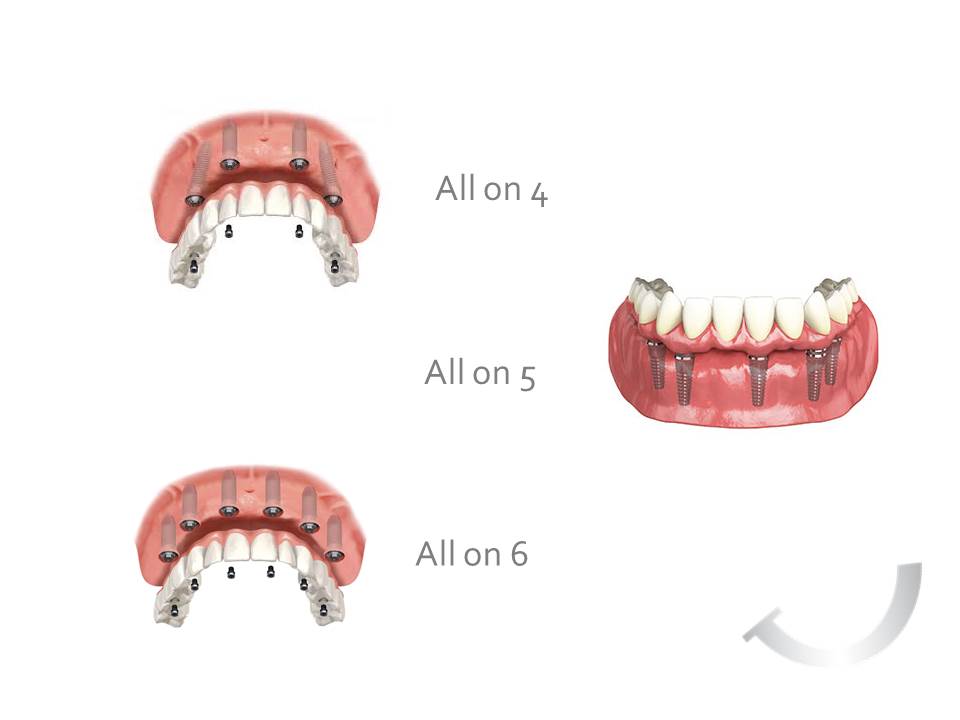06.06.2019
Work on implants can be divided into fixed and semi-fixed work if we look at how they function in the mouth, while we may also divide them by type of material on ceramics (with metal or zirconia), zirconium, acrylic and composite.
Given these possibilities then the question arises, how do we decide for the type of work? Our recommendation is mainly based on the number of teeth to be replaced or on the number and quality of the remaining teeth in your mouth.
When a tooth is missing, it is a recommendation to replace it with the implant and crown, which is fixed work.
When three or more teeth are missing, it is recommended to put a bridge on the implants, which has at least two or three braces, which is also a fixed work.
When we are missing all teeth of one or both jaws then we can work fixed or semi-fixed depending on the number of implants, implant placement positions and bone quality.
Toothless jaw
A person who already wears a prosthesis (mobile work) and has difficulty or is unable to wear a prosthesis our recommendation is to make a half-fixed work. This is a work where four implants are embedded and there is a link (carrier, primer, link) that has a bay (second, second part of the link) in the new prosthesis. This new denture is not movable, it is stable and provides a normal, smooth chewing and speech. It also replaces the lost soft tissue and supports the lips and cheeks. It looks like an “ordinary” denture just because the upper prosthesis does not have acrylic pads, and the bottom looks the same. This type of work is semi-fixed because it does not move in the mouth, but it has to be removed from the mouth in order to clean it.
A person who has never worn the prosthesis, does not have a large loss of soft tissue, meaning support for lips and cheeks, the intercourse gap is not large and there is a shortage of all teeth of one or both jaws, we would recommend to make a fixed implant work. There are then six or eight implants on which the bridge will work. The number of implants depends on the quality of the bone, the mesmerizing gap and the material from which the final work will be done. Implants are placed on superstructures that hold the bridge. They are fixed to the bridge with cement or screws.
The special category of implant works consists of works called “All-on-four” for the lower jaw and “All-on-five” or “All-on-six” for the upper jaw. They are referred to by the number of implants being placed, ex. four, five or six. These are fixed jobs where the direction of the implant settings is different (ex. the angle, diagonal) and are done when there is a lack of bone structure in the back of the jaw. In these works, the dental arch is shortened and it works with less teeth in the bridge. This type of work is chosen when we want to avoid the prothesis by placing a fixed work in the mouth, yet we do not have the possibility to place implants in the back of the jaw (molar area).
Individual approach
All types of work are as good as the patient’s satisfaction with them. There are plenty of professional and personal factors that influence the choice of work. First, it is always best to consider the patient’s wish, then make an orthopantomogram and a CT of the jaws and finally see which type of work can be recommended to a particular patient.
Individual approach is the basis for all works, since each person is different and has a specific condition in their mouth. This only means that each patient will receive a different recommendation: fixed or mobile, with or without implants.
